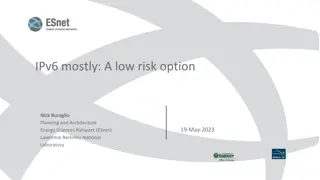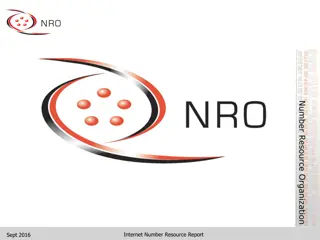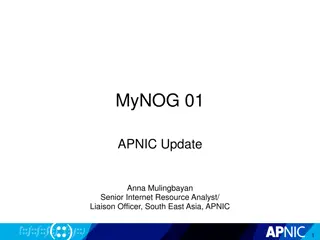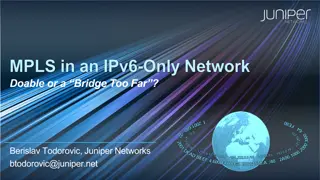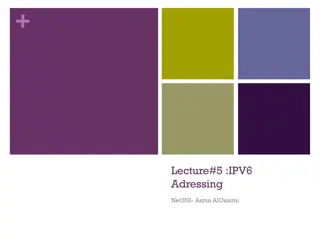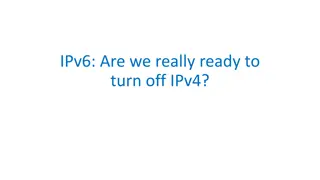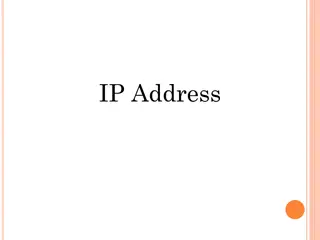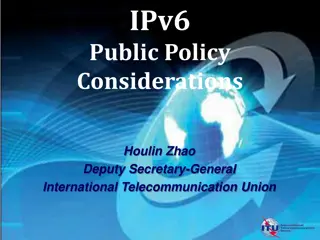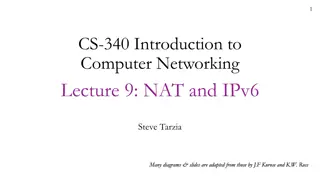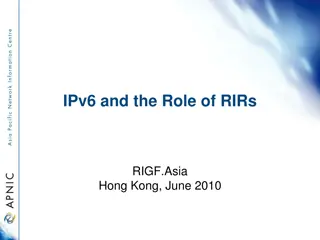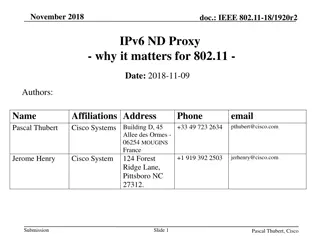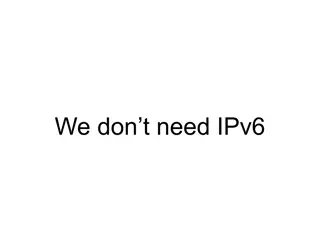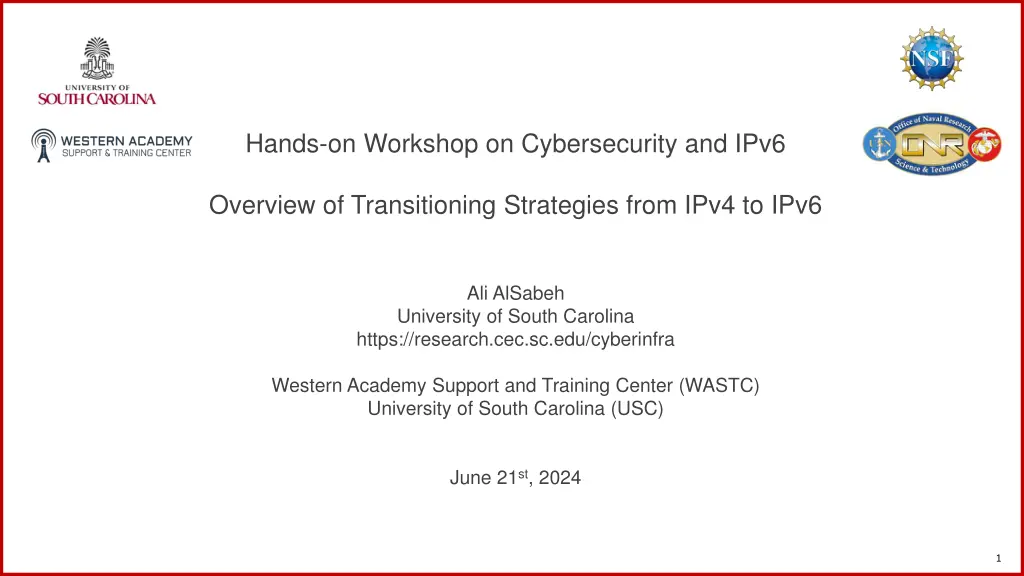
Transitioning Strategies to IPv6 - Hands-on Workshop Summary
Join the Western Academy Support and Training Center's hands-on workshop on cybersecurity and IPv6 transitioning strategies, presented by Ali AlSabeh from the University of South Carolina. Explore the advancements in IPv6, the challenges of transitioning from IPv4, and various strategies including dual-stack routers, translation devices, and tunneling techniques. Discover the critical shift from IPv4 to IPv6 and how to navigate this essential transition effectively.
Download Presentation

Please find below an Image/Link to download the presentation.
The content on the website is provided AS IS for your information and personal use only. It may not be sold, licensed, or shared on other websites without obtaining consent from the author. If you encounter any issues during the download, it is possible that the publisher has removed the file from their server.
You are allowed to download the files provided on this website for personal or commercial use, subject to the condition that they are used lawfully. All files are the property of their respective owners.
The content on the website is provided AS IS for your information and personal use only. It may not be sold, licensed, or shared on other websites without obtaining consent from the author.
E N D
Presentation Transcript
Hands-on Workshop on Cybersecurity and IPv6 Overview of Transitioning Strategies from IPv4 to IPv6 Ali AlSabeh University of South Carolina https://research.cec.sc.edu/cyberinfra Western Academy Support and Training Center (WASTC) University of South Carolina (USC) June 21st, 2024 1
Transitioning from IPv4 to IPv6 With the exhaustion of IPv4 addresses and the ever-growing number of devices connected to the Internet, moving to IPv6 is critical What are the advances that were made in IPv6? The technical details of IPv6 are now defined1 IPv6-capable devices devices that can process IPv6 packets are manufactured IPv6-capable devices can send and receive IPv4 packets [1] IETF, IPv6 is an Internet Standard https://www.ietf.org/blog/ipv6-internet-standard/ 3
Transitioning from IPv4 to IPv6 How can we transition from IPv4 to IPv6? Declare a flag day that requires all Internet machines to transition to IPv6 Impossible to achieve that with billions of devices today 4
Transitioning from IPv4 to IPv6 How can we transition from IPv4 to IPv6? Adopt dual-stack routers and application servers (devices process both IPv4 and IPv6 packets) The Internet is predominated with legacy IPv4-capable systems cannot handle IPv6 datagrams It is a cost-inefficient solution IPv4: 192.168.1.10 IPv4: 192.168.1.10 IPv6: 2001:1::1/64 IPv6: 2001:1::2/64 A B 5
Transitioning from IPv4 to IPv6 How can we transition from IPv4 to IPv6? Deploy a translation device that converts IPv6 packets into IPv4 packets and vise versa The scalability might be an issue due to the resources required on the translator device IPv6 packet IPv4 packet A B Translator IPv6-only IPv4-only 6
Transitioning from IPv4 to IPv6 How can we transition from IPv4 to IPv6? Adopt tunneling techniques to transport IPv6 packets over IPv4-capable systems Most widely adopted approach for IPv4-to-IPv6 translation Tunneling is a key concept that has wide use cases in IP networks (e.g., Virtual Private Network (VPNs)) In the figure below, the IPv6 devices want to communicate using IPv6 datagrams This is achieved by creating an end-to-end tunnel over third-party networks IPv6: A IPv6: B IPv6: E IPv6: E Tunnel 7
Transitioning from IPv4 to IPv6 The IPv6-capables devices A and F need to communicate via IPv6 In the figure below, the IPv6 devices want to communicate using IPv6 datagrams This is achieved by creating an end-to-end tunnel over third-party networks IPv6: A IPv6: B IPv4: C IPv4: D IPv6: E IPv6: E IPv6 IPv4 IPv4 IPv6 Src: A Dst: F Src: B Dst: E IPv6 Src: B Dst: E IPv6 Src: A Dst: F Src: A Dst: F Src: A Dst: F 8
GRE Tunneling Protocol Generic Routing Encapsulation (GRE) is a tunneling protocol used for the encapsulation of a network layer protocol within another network layer protocol GRE encapsulates data packets and redirects them to a device that de-encapsulates them and routes them to their final destination GRE tunnels are usually configured between two routers. Each router acts like one end of the tunnel 9
GRE Tunneling Protocol GRE adds two headers to each packet: the GRE header (4-bytes long) and outer IP header (20- bytes long) The GRE header indicates the protocol type used by the encapsulated packet The outer IP header encapsulates the original packet's header and payload GRE packet uses two IP headers: one for the original packet and one added by the GRE protocol TCP/ UDP header Application data layer Ethernet header Original IP header TCP/ UDP header Original IP header Ethernet header Outer IP header GRE header Application data layer 10



